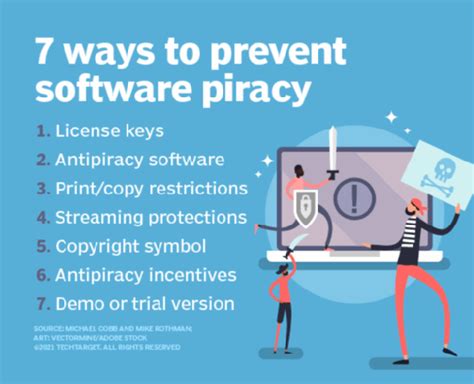Software piracy is the unauthorized use, duplication, or distribution of copyrighted software. It is a major problem for software developers and publishers, as it can lead to lost revenue and decreased profits. Software piracy has been around since the early days of computing, but with the rise of the internet, it has become even more widespread.
Software piracy occurs when someone copies, distributes, or uses software without permission from the copyright holder. This includes downloading pirated versions of software from websites, sharing software with friends or colleagues, or using cracked versions of software that have had their security measures bypassed.
The consequences of software piracy are serious. Not only does it deprive the copyright holder of potential income, but it also puts users at risk of malware infection. Pirated software often contains malicious code that can damage computers and networks, steal data, or allow hackers to gain access to sensitive information. Additionally, software pirates may be subject to civil and criminal penalties, including fines and jail time.
Fortunately, there are steps that both individuals and businesses can take to prevent software piracy. The most important step is to ensure that all software used in an organization is properly licensed. Companies should keep track of all licenses purchased and make sure they are up-to-date. Additionally, organizations should implement policies that prohibit employees from downloading or sharing unlicensed software.
Another way to reduce the risk of software piracy is to use digital rights management (DRM) technology. DRM systems help protect software by preventing unauthorized copying and distribution. They also provide additional features such as license tracking and expiration dates.
Finally, companies should educate their employees about the risks associated with software piracy. Employees should understand the legal implications of using unlicensed software and the potential harm it can cause to the company’s network and reputation.
In conclusion, software piracy is a serious issue that can have significant financial and legal repercussions. To protect themselves, organizations should ensure that all software used is properly licensed and implement policies to discourage illegal downloads and sharing. Additionally, they should consider using DRM technology and educating their employees about the dangers of software piracy. By taking these steps, companies can help protect their intellectual property and avoid costly penalties.
